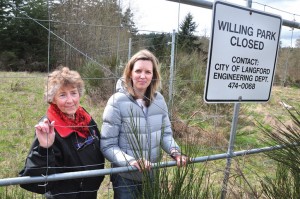posted by admin on Aug 23
Dean Murdock
Saanich Councillor, and
Peninsula Agricultural Commission Liaison
Once again, our region is faced with the challenge of proposals to develop agricultural land for residential purposes. The market value of farm land as potential real estate is a tempting cash infusion for farmers struggling to maintain a profit. But this is a short-term solution. In the long run, it is no solution at all — and brings major consequences for future food production, land use, and our valued quality of life.
As our population grows, there is increased demand for development and pressure to break through our urban containment boundaries and encroach upon agricultural land. Many local governments in the province have done just that. But developing agricultural land to accommodate growth is killing the goose for its golden egg. It compromises our food security and makes a mockery of our land-use plans (and the citizens’ input into them), while contributing to car-dependent sprawl.
Instead of paving our farmland for housing to generate real estate income, we should be looking for more ways to support our local farmers and their food production by keeping farming profitable. There are lots of options: creating “pocket markets” to sell local foods, encouraging local governments and businesses to bring in a “buy local” policy for events, and working with senior levels of government to create incentives for grocers to offer local food choices.
As we develop an Agricultural Action Plan, I welcome your ideas and suggestions on ways to support local farmers and encourage local food production. Send me your ideas: http://deanmurdock.ca/contact-me
Buying local food doesn’t just support our farmers, it’s good for our health and environment too. Local food is fresher and has a much smaller carbon footprint. Since it arrives fresh, it needs less (or no) preservatives.
Protecting and enhancing local food production starts with saving our agricultural land and maintaining our community’s urban containment boundaries. We have already planned, through public consultation, technical analysis, and council approvals, to concentrate future density in urban centres and to buffer farm lands from suburban intrusion. It reflects our long-term commitment to a future that avoids further urban sprawl, reduces congestion and greenhouse gases, and ensures we have an abundant local food supply.
Let’s support our farmers and save our farmland. Doing so will protect our quality of life, food security, our health, and our climate for now and future generations.
